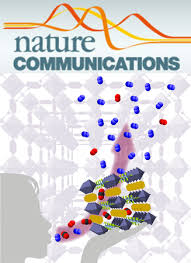Nat Commun. 2025 Feb 12;16(1):1587. doi: 10.1038/s41467-025-56880-0
Nuclear position controls the activity of cortical actomyosin networks powering simultaneous morphogenetic events
Nicolas Roby1, Matteo Rauzi1
Affiliations
1Université Côte d’Azur, CNRS, Inserm, iBV, Nice, France.
Abstract
Tissue morphogenesis shapes epithelial sheets via cell remodelling to form functional living organisms. While the mechanisms underlying single morphogenetic events are well studied, how one tissue undergoes multiple concomitant shape changes remains largely unexplored. To tackle this, we study the process of simultaneous mesoderm folding and extension in the gastrulating Drosophila embryo. This composite transformation relies on a sharply timed reorganization of the cortical actomyosin network into two distinct subcellular tiers to drive concomitant cell apical constriction and lateral intercalation for tissue folding and convergence-extension, respectively. Here we elucidate the spatio-temporal control of the two-tiered actomyosin network. We show that, within the geometric constraints imposed by the columnar shape of mesoderm epithelial cells, the nucleus acts as a barrier shielding the lateral cortex from interactions with the microtubule network, thereby regulating the distribution of the key signalling molecule RhoGEF2. The relocation of the nucleus, driven by the contraction of the first actomyosin tier and the resulting cytoplasmic flow, unshields the lateral cortex for RhoGEF2 delivery to direct the stereotypic formation of the second tier. Thus, the nucleus and its position function as a spatio-temporal cytoskeleton compartmentalizer establishing a modular scaffold powering multiple simultaneous cell remodeling for composite morphogenesis.
DOI: 10.1038/s41467-025-56880-0

